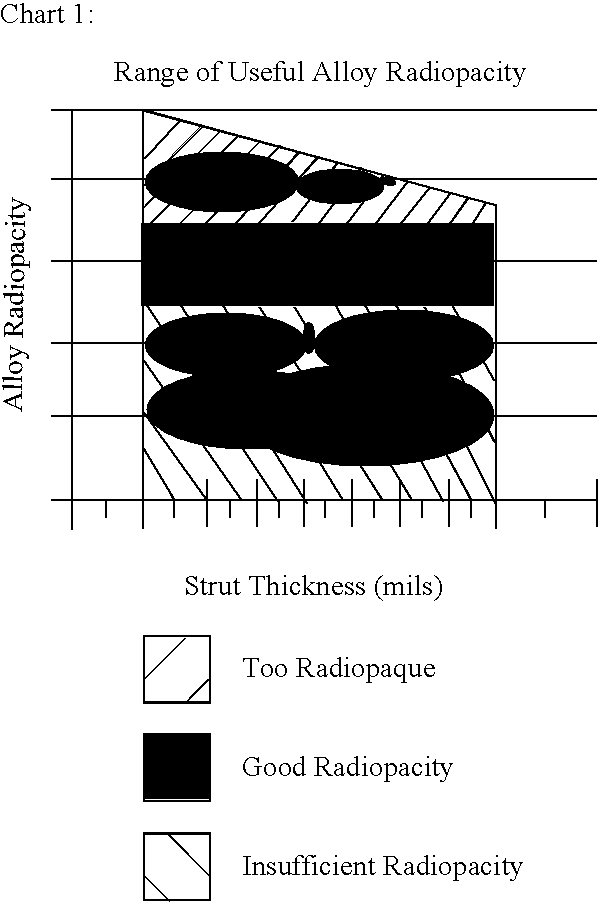MRI compatible, radiopaque alloys for use in medical devices
a radiopaque alloy and compatible technology, applied in the field of medical devices, can solve the problems of not being able to achieve fluoroscopy fluoroscopy and compromising clinical functionality, and achieve the effects of reducing strain, improving clinical function, and excellent mri compatibility and biocompatibility
- Summary
- Abstract
- Description
- Claims
- Application Information
AI Technical Summary
Benefits of technology
Problems solved by technology
Method used
Image
Examples
Embodiment Construction
[0017]The present invention relates to a metallic alloy that provides a sufficient degree of radiopacity and MRI compatibility to be visible using both fluoroscopy and MRI imaging technology. The metallic alloy is particularly suitable for medical devices including, but not limited to, intravascular stents, anastomosis clips, and AAA grafts. As an example by comparison, the medical device formed of 316L stainless steel will have some radiopacity under fluoroscopy, however, the same device will generate a “black hole” imaging artifact around the metal device when viewed under MRI imagery. The alloy of the present invention solves the prior art problems by providing a medical device formed of the alloy of the present invention that is compatible with both fluoroscopy and MRI imaging.
[0018]Metallic alloy families that provide sufficient radiopacity under both fluoroscopy and MRI imaging include aluminum (Al), titanium (Ti), zirconium (Zr), niobium (Nb), molybdenum (Mo), silver (Ag), in...
PUM
| Property | Measurement | Unit |
|---|---|---|
| thickness | aaaaa | aaaaa |
| thickness | aaaaa | aaaaa |
| thickness | aaaaa | aaaaa |
Abstract
Description
Claims
Application Information
 Login to View More
Login to View More - R&D
- Intellectual Property
- Life Sciences
- Materials
- Tech Scout
- Unparalleled Data Quality
- Higher Quality Content
- 60% Fewer Hallucinations
Browse by: Latest US Patents, China's latest patents, Technical Efficacy Thesaurus, Application Domain, Technology Topic, Popular Technical Reports.
© 2025 PatSnap. All rights reserved.Legal|Privacy policy|Modern Slavery Act Transparency Statement|Sitemap|About US| Contact US: help@patsnap.com

